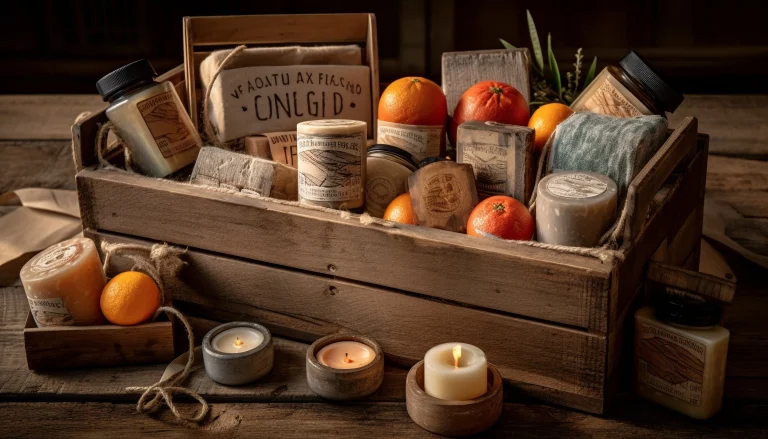When Ice Was a Luxury: How Our Ancestors Kept Food Fresh Without a Fridge
Imagine living in a world where the hum of a refrigerator didn’t exist. Every ounce of food preservation relied not on machines, but on inherited skills, local wisdom, and pure ingenuity. Your ancestors knew how to keep food edible through winter, droughts, and long journeys. These traditional food preservation methods before refrigeration weren’t just survival tactics—they were life lessons passed through generations. And today, rediscovering these old-fashioned preservation techniques can empower you to become more self-sufficient, resourceful, and resilient.

Learning how to preserve food the old-fashioned way can give you a real sense of freedom—especially when modern systems fail.
👉 Explore The Self-Sufficient Backyard to discover hands-on techniques for growing, preserving, and storing food using proven methods that worked long before electricity ever existed.
In this guide, you’ll explore 11 time-tested traditional food preservation methods before refrigeration. Whether you’re preparing for off-grid living, food shortages, or aiming to build a prepper pantry, these food storage techniques offer long-term solutions that remain relevant in the modern world.
Why Traditional Food Preservation Matters Today
Embracing Sustainability and Self-Sufficiency
In uncertain times, knowing how to preserve food without refrigeration gives you control and peace of mind. These traditional food preservation methods reduce dependency on electricity and bring you closer to the food you eat.
Reducing Waste and Honoring the Past
Using ancestral food storage techniques cuts down on waste. You’re not only extending the life of your food—you’re preserving centuries-old knowledge that once fed entire communities without a fridge in sight.

11 Traditional Food Preservation Methods Before Refrigeration
1. Drying: Let Nature Do the Work

Drying is one of the oldest traditional food preservation methods. It works by removing moisture, which bacteria and mold need to thrive.
- How it works: Sun or air dries food until it’s brittle or leathery.
- Best for: Herbs, fruits (apples, grapes, tomatoes), vegetables, and meats (jerky).
- Pro tip: Use netting or screens to keep bugs out while sun-drying your food.
2. Salting: A Classic Preservation Powerhouse

Salting is a traditional method of food preservation that uses osmosis to draw water out of food, inhibiting bacteria.
- How it works: Food is layered in dry salt or submerged in brine.
- Best for: Fish, pork, and cured meats.
- Fun fact: Sailors relied on salted meat and fish as emergency food during long voyages.
3. Smoking: Flavor and Function Combined

Smoking is another ancient preservation method that also adds flavor to preserved food.
- How it works: Smoke from hardwoods adds antimicrobial compounds to the food.
- Types: Hot smoking cooks the food; cold smoking preserves it without cooking.
- Best for: Fish, sausage, ham, cheese.
4. Fermentation: Controlled Rot That Works Wonders

Fermentation is one of the most valuable traditional food preservation methods before refrigeration. It enhances flavor, shelf life, and nutrition.
- How it works: Natural bacteria feed on sugars, producing acid or alcohol that preserves food.
- Best for: Sauerkraut, kimchi, yogurt, kefir, sourdough.
- Health bonus: Fermented foods are rich in probiotics that support gut health.
5. Pickling: Tangy, Crunchy, Long-Lasting

Pickling is a popular method of food preservation before refrigeration that involves storing foods in acid or salt brine.
- How it works: The acidic or salty environment prevents microbial growth.
- Best for: Cucumbers, onions, eggs, beets, peppers.
- Types: Vinegar pickles vs. lacto-fermented pickles.
6. Root Cellaring: The Original Refrigerator

Root cellars were essential for traditional long-term food storage before refrigeration.
- How it works: A cool, dark, humid place keeps produce fresh for months.
- Best for: Potatoes, carrots, turnips, apples, cabbages.
- Tip: Store items in sand or sawdust for insulation and moisture control.
7. Canning: Seal It Tight

Canning is one of the more modern traditional food preservation methods that became widespread in the 1800s.
- How it works: Food is packed in sterilized jars and heated to destroy bacteria and create a vacuum seal.
- Types: Water bath canning for high-acid foods and pressure canning for low-acid foods.
- Best for: Jams, fruits, vegetables, soups, meats.
8. Sugaring: Sweet and Safe

Sugaring is a method of preserving fruits by coating or immersing them in sugar.
- How it works: Sugar creates an environment where bacteria cannot thrive.
- Best for: Fruit preserves, marmalades, candied ginger.
- Bonus: This method adds shelf-stable sweetness to your emergency food supply.
9. Preserving in Fat: The Art of Confit

This traditional preservation method involves submerging cooked food in fat.
- How it works: Once sealed under fat, the food is protected from oxygen and bacteria.
- Best for: Duck confit, pâtés, rillettes.
- Modern tip: Store cooled confit in the fridge or cellar.
10. Alcohol Preservation

High-proof alcohol is both a flavoring and preservation agent.
- How it works: Alcohol kills microbes and preserves texture.
- Use for: Vanilla, fruits in liqueur, herbal tinctures.
- Keyword Tip: Alcohol was historically used in food preservation where refrigeration was not available.
11. Ash and Clay Storage: Earthy, Effective Methods

Before refrigeration, people stored food in ash, clay, or limewater to prevent spoilage.
- How it works: These natural materials block moisture and deter pests.
- Best for: Cheese, eggs (limewater), grains, butter.
- Example: Ancient Egyptians used sealed clay jars to store grain long-term.
🌟 Recommended Resource: The Self-Sufficient Backyard
If you’re serious about mastering traditional food preservation methods and becoming more self-reliant, The Self-Sufficient Backyard is the ultimate guide. Created by a couple living 100% off-grid, it teaches you how to preserve food, collect water, generate power, and build a truly independent homestead—even if you’re just getting started.
✅ Learn to build a root cellar
✅ Step-by-step guides for fermenting, smoking, drying, and more
✅ Techniques for raising food and reducing grocery bills
👉 Click here to check out the full guide and start preserving the way your ancestors did.
Traditional Recipes Using These Preservation Methods
These recipes show how traditional food preservation methods before refrigeration were used in everyday life:
Lacto-Fermented Carrots (Fermentation):

- Slice carrots and garlic, pack them in a jar, cover with saltwater brine, and ferment in a cool, dark place.
Salted Fish (Salting):

- Take fresh fish, layer it with coarse salt, let it cure in a cool location for several days, then store in airtight containers.
Pickled Beets (Pickling):

- Cook and peel beets, pack in sterilized jars with vinegar, sugar, and spices. Seal and store in a cool pantry.
Apple Root Cellar Pie (Root Cellaring):

- Use firm apples from your root cellar, slice and mix with sugar and spices, then bake in a homemade pie crust.
FAQ: Traditional Food Preservation Methods Before Refrigeration
What are the most effective traditional food preservation methods before refrigeration?
The most reliable traditional methods include drying, salting, fermentation, and pickling. These techniques allowed food to be stored without refrigeration for long periods.
Are traditional food preservation methods safe for modern use?
Yes. When done correctly, these food storage techniques are safe and effective. They’re still used today by homesteaders, preppers, and natural living advocates.
What are the best foods to preserve without refrigeration?
Grains, dried beans, salted or smoked meats, pickled vegetables, and root vegetables stored in cellars all last long without modern refrigeration.
Can you combine traditional food preservation techniques?
Absolutely. Many cultures combined methods for better results—like salting and drying fish or fermenting and pickling vegetables.
Conclusion: Embrace Traditional Food Preservation for a Resilient Future
Traditional food preservation methods before refrigeration are not only practical—they’re empowering. Ready to take food independence seriously? Get your copy of The Self-Sufficient Backyard and start building your long-term pantry today.
By learning and applying these timeless practices, you can reduce your reliance on modern conveniences, cut down on food waste, and take control of your food security. Whether you’re prepping for emergencies or exploring a simpler way of life, these old-fashioned food preservation skills give you the tools to thrive.
Try one technique today—dry apples, ferment carrots, or store beets in a root cellar. Preserve your food. Preserve your independence.

